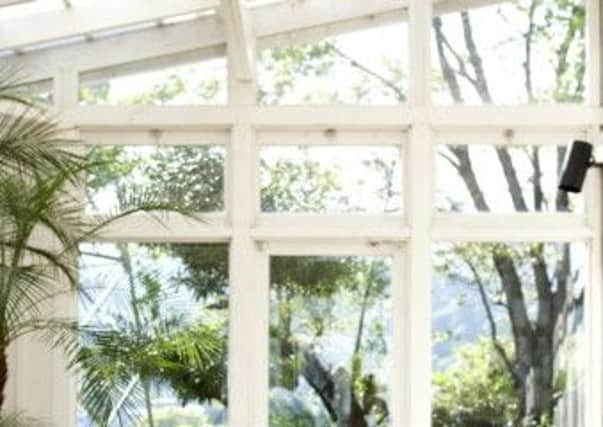Bringing your garden indoors


Hot, sunny days seem to be a thing of the past, but with a conservatory, you can still enjoy the garden while remaining safely under cover.
Conservatories are versatile too, and can be made into sitting rooms, playrooms, dining rooms, dens or even home offices. The problem, though, is that they’re often boiling when it’s hot, and freezing when it’s cold, so you must make sure they are properly equipped for extremes of temperature.
Advertisement
Hide AdAdvertisement
Hide AdMany conservatories have low brick walls with glazing above, but if you’d prefer a garden room to a conservatory, you can increase the brick ratio (and perhaps have a tiled or semi-tiled roof), which makes it easier to insulate and add radiators.
Conservatories are usually at the back of the house, but if there’s a sunny spot at the side, you may prefer to put yours there. Its position can make a big difference to how usable it is, so consider how the sun moves across the plot during the day.
An east-facing conservatory will only get morning sun, while a west-facing one will be cooler in the morning and hotter towards the end of the day.
Conservatories that face north should get angled sun first and last thing and so won’t overheat on hot days, but they can be cold in winter. A south-facing conservatory makes the best sun-trap, but it will get extremely hot on a warm summer day.
Advertisement
Hide AdAdvertisement
Hide AdIt is, of course, a shame to spend all that money on a conservatory and only be able to use it when the weather allows, so efficient heating and cooling systems are a must to make the most of your investment.
Portable heaters aren’t a good long-term solution and while extending your home’s central heating system into the conservatory may not be cheap, powerful radiators are one way to counter all that glass when it’s cold. Installing electric heating is often easier - with under-floor heating, you have a nice warm floor and warmth that radiates upwards, ideal if there’s little or no room for radiators.
Blinds help to insulate a conservatory in winter, as well as keeping it cool in summer, and provide privacy, reduce glare and prevent soft furnishings from fading in the sun.
As well as being usable all year round, your conservatory should be in proportion to the garden and house, as you don’t want to devalue your home by making the garden too small with an oversized conservatory. The best way to get an idea of the size (and position) is to mark it out in the garden with spray paint or string and pegs, and change it if you’re not happy with it.
Advertisement
Hide AdAdvertisement
Hide AdLike anything in your home, there are different styles of conservatory, from ones with ornate period features to plainer, more contemporary ones. Quite simply though, the best conservatory is the one that matches the period and style of your home so that it becomes a seamless, valuable, addition.